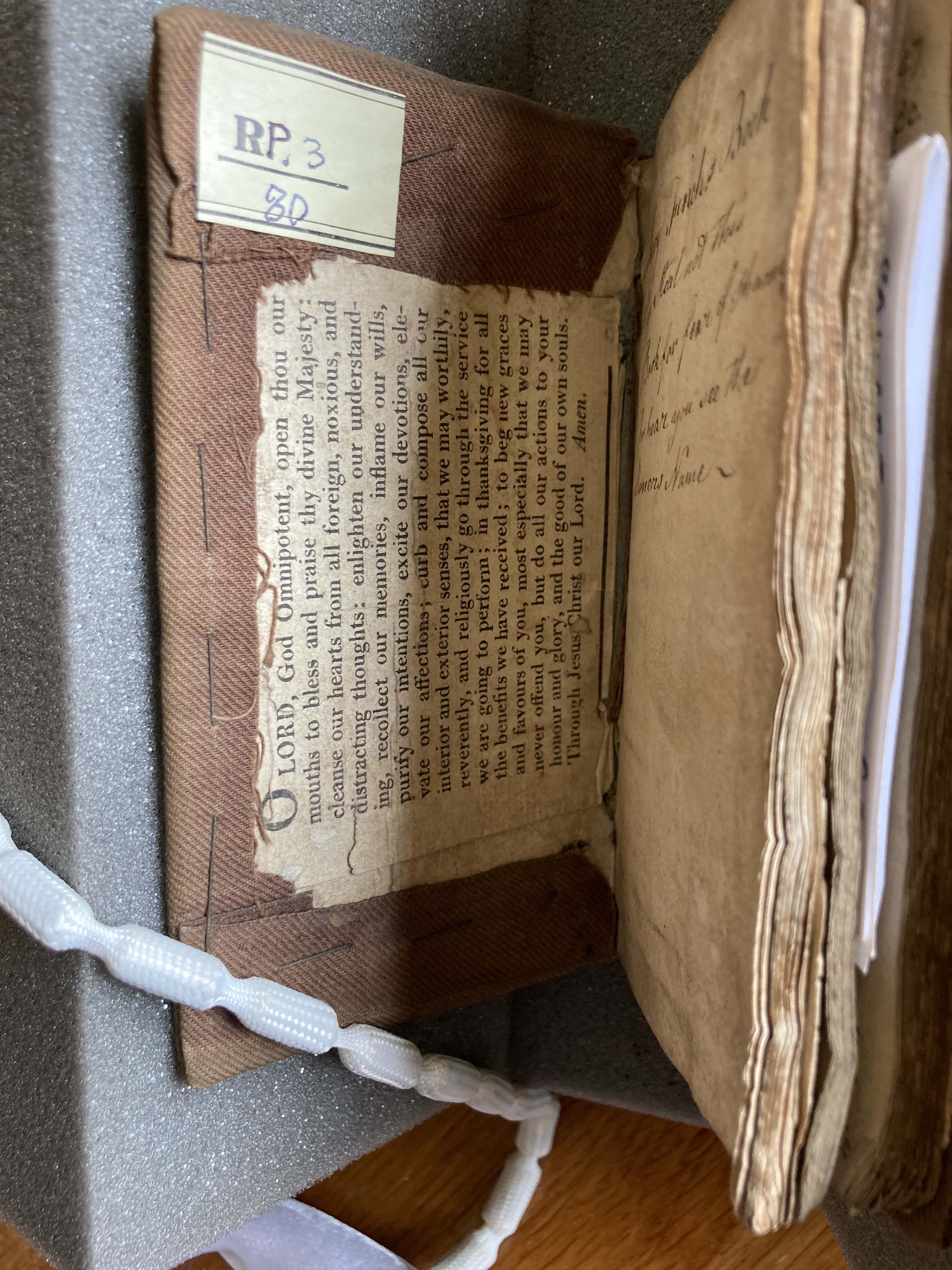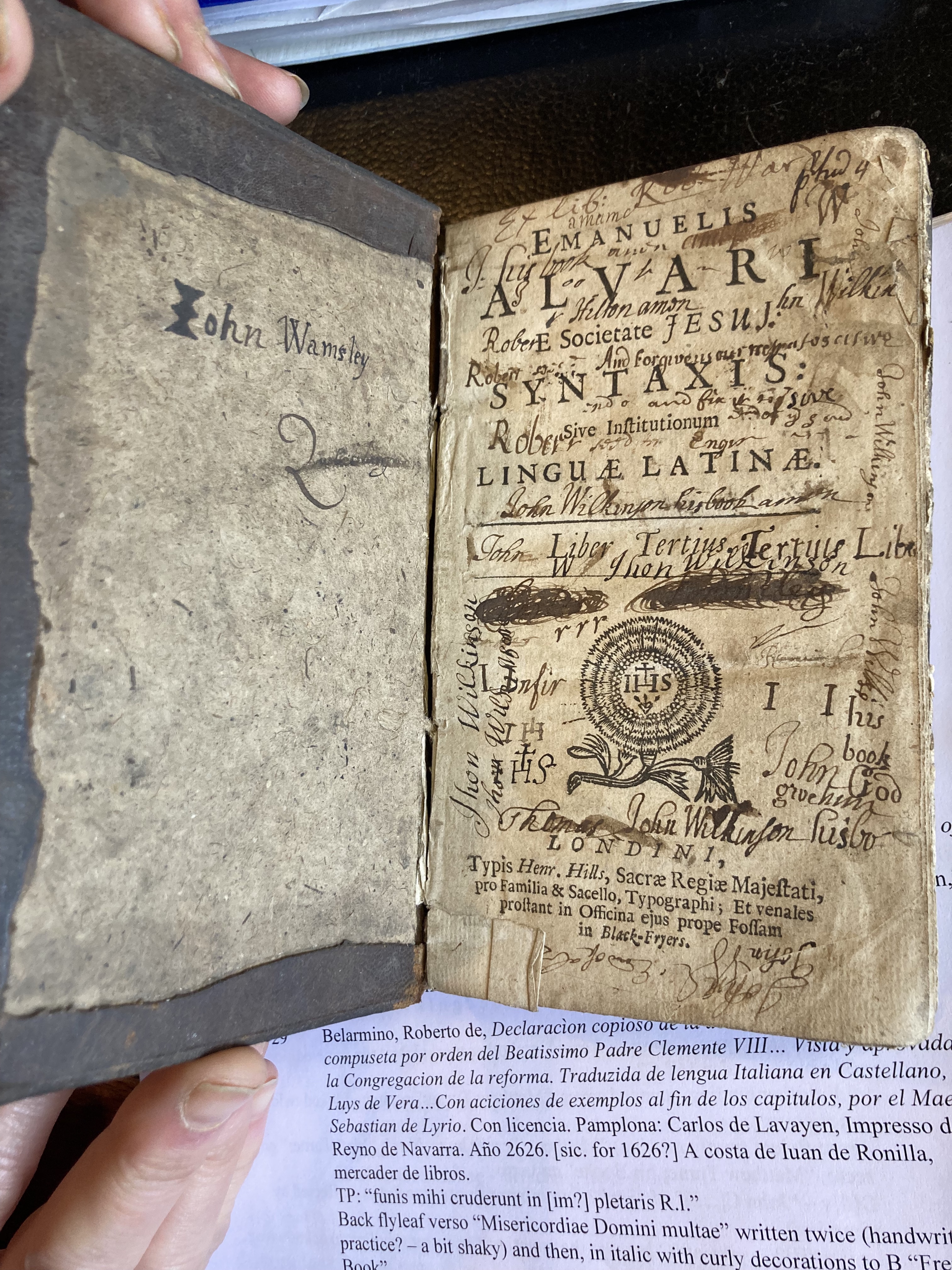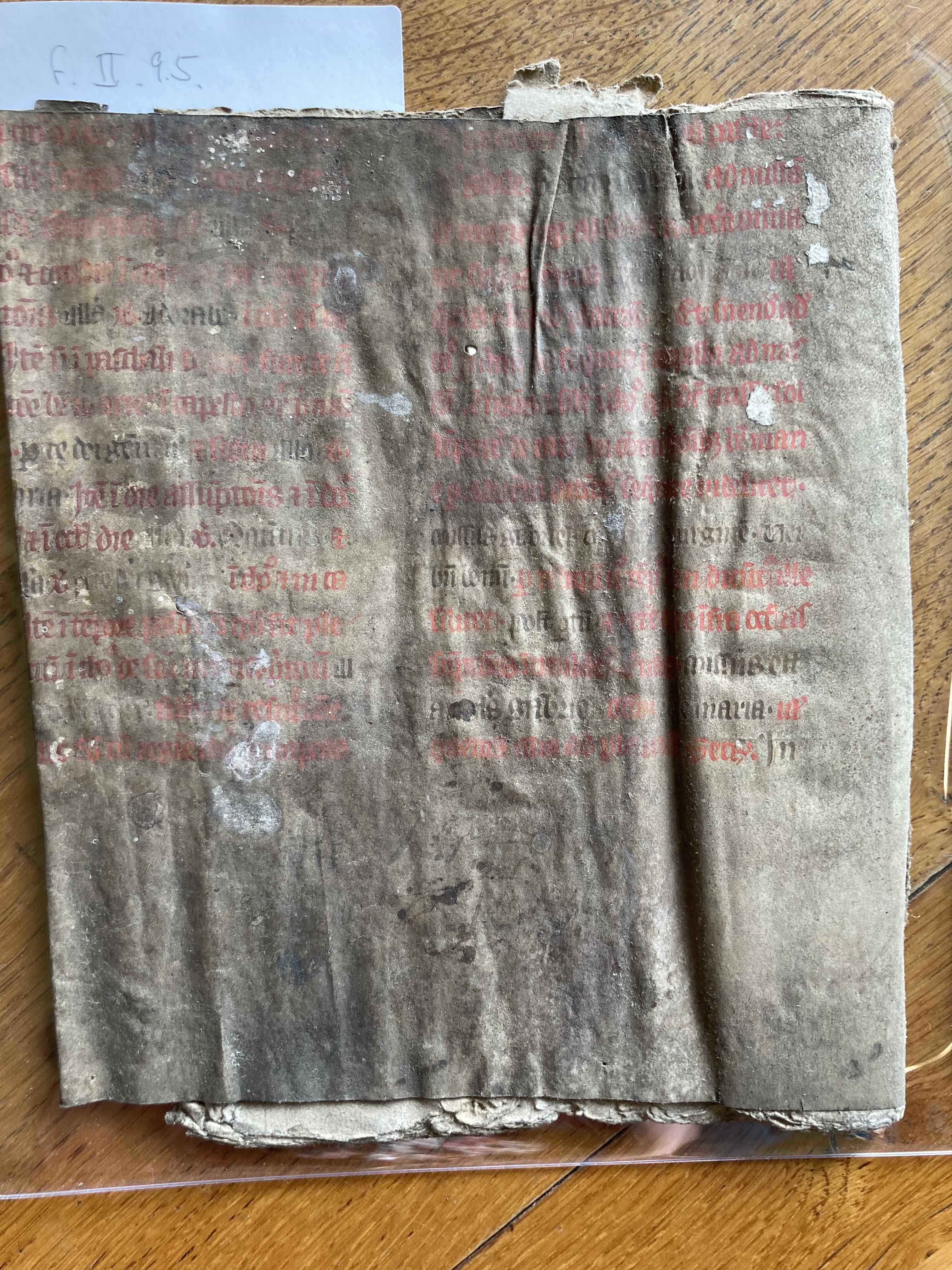Recusant Readers
Reading with the Finches of Mawdesley
Contents: About the Collection | About the About Page | Tech
About the Collection
The Finch-Haydocke collection consists of roughly two hundred and fifty sixteenth- through eighteenth-century printed books and several paper-bound manuscript notebooks collected or produced by the Finch family of Mawdesley, Lancashire between the seventeenth and the eighteenth century. The collection can be subdivided into several sub-collections:
-
Books formerly owned by the Reverend Cuthbert Haydocke (d.1763), chaplain to the Duke of Norfolk, who was related to the Finches by marriage. His books include sixteenth- through eighteenth-century devotional, homiletical, and polemical texts, heavily used manuals for priests, and folio-sized patristic texts, some copiously annotated in the late seventeenth-century hand of a another former owner. Cuthbert Haydocke’s books account for nearly one third of the collection and tend to bear his distinctive motto “mis. dni.” (for miserere domini) on their title pages.
-
Books evidently used by the children of the family for home education or at the local grammar school at Bispham, which accepted girls as well as boys. These include sixteenth- and seventeenth-century Latin and Greek grammars, concordances, dictionaries, and copies of key schoolroom texts such as Virgil’s Aeneid, Ovid’s Metamorphosis, and poems by Horace, Juvenal, and Mantuan. The school books show ownership inscriptions, drawings, and heavy annotations by both male and female children, many of them from the Turner family, which married into the Finch family in the early eighteenth century.
-
Bibles and books for personal devotion, several with ownership marks of the women of the family.
-
Practical works including texts on roads and fares, the law, and the offices of constables and minor officials.

Mary Finch's Devotional Book
This copy of The Daily Companion was owned and annotated by Mary Finch in the nineteenth century. She appears to have customized the binding and added a printed prayer to the inside of the front cover as well as stitching into the relevant section of the prayer book a tiny additional booklet of Prayers to be used Before and After the Mass.
Many books record several generations of ownership. Several of the Catholic devotional and polemical works published abroad or on secret presses represent works or editions extant in only a few other known copies. A few of the books are in French or Catalan, and some show evidence of continental ownership and use. The books are almost all in their original bindings, and a large number of them are still marked with numbers in an eighteenth-century hand, many with a distinctive diamond-shaped numbered label on the spine. It is therefore possible to reconstruct the order of the books as they sat on the family bookshelves, and to glean information about the conditions under which they were acquired and personalized. The fragile state of the bindings makes them difficult to handle, but it also reveals medieval and early modern manuscript binding waste. The high degree of contextual information provided by the bindings, numbering system, and inscriptions make this collection uniquely valuable for the study of early library formation and the afterlives of sixteenth- and seventeenth-century books. It also offers insight into early modern women’s reading and the circulation of Catholic books between England and the continent.
This site is generated using CollectionBuilder-GH, a project to create a free and simple digital collection using GitHub Pages from:
- a CSV of collection metadata
- a folder of JPG images or PDF documents
The template repository features four objects from the University of Idaho Library’s Digital Collections.
For full details of creating your own collection site, visit CollectionBuilder Documentation!
About the About Page
We want to make About pages exciting, and easy to build.
The CollectionBuilder about page features a narrowed column with its own (optional) menu, featured content, and some technical information.
To build one, a user writes in Markdown and includes content from the site, as well as typical Bootstrap features like cards and modals, using code snippets like those detailed below. We hope this makes it easier for site builders to develop the collection AND add interesting and engaging contextual information.
Each included file has several options, which are documented in the files themselves and briefly documented below. We’ve given the content widths of 25% and 50% to save space, but you can feature the entire image or document.
You can also see a page featuring a bonanza of feature includes options on our CollectionBuilder-GH demo site.
Include Collection Items
Include an Image
- Image –>
{% include feature/image.html objectid="demo_001" width="75" %}
Include a PDF
- PDF – >
{% include feature/pdf.html objectid="demo_002" width="50" %}
Include a Video
- Video:
{% include feature/video.html objectid="demo_004" %}
Include an Audio File
- Audio:
{% include feature/audio.html objectid="demo_003" %}
Include Bootstrap Features
Include a Card
- Card – >
{% include feature/card.html header="This is a Card" text="The card features an image from the collection as a cap" objectid="demo004" width="25" centered=true %}
This is a Card
The card features an image from the collection as a cap
Include a Button
- Buttons – >
{% include feature/button.html text="Button Link to Somewhere" link="https://collectionbuilder.github.io/" color="success" %}
Include an Alert
- Alerts – >
{% include feature/alert.html text="this is an *alert* that 'warns' a user" color="warning" align="center" %}
This is an alert that ‘warns’ a user with centrally aligned text.
Include a Modal
- Modals – >
{% include feature/modal.html button="This is a modal using a 'primary' colored button to invite clicking" title="when clicked:" text="A Modal will pop out a box with some more information" color="primary" %}
Technical Credits - CollectionBuilder
This digital collection is built with CollectionBuilder, an open source framework for creating digital collection and exhibit websites that is developed by faculty librarians at the University of Idaho Library following the Lib-Static methodology.
The site started from the CollectionBuilder-GH template which utilizes the static website generator Jekyll and GitHub Pages to build and host digital collections and exhibits.

